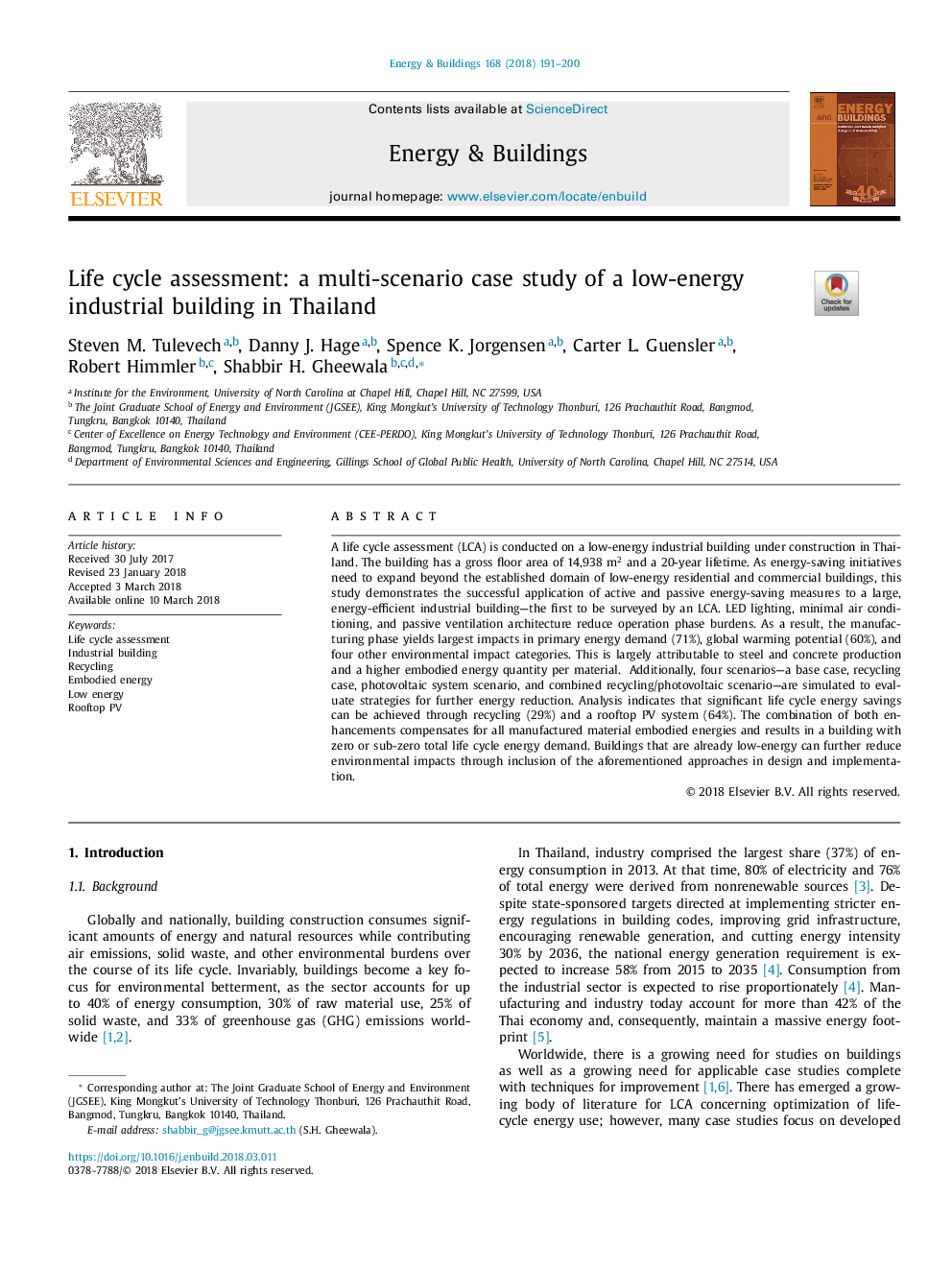| Article ID | Journal | Published Year | Pages | File Type |
|---|---|---|---|---|
| 6728057 | Energy and Buildings | 2018 | 10 Pages |
Abstract
A life cycle assessment (LCA) is conducted on a low-energy industrial building under construction in Thailand. The building has a gross floor area of 14,938Â m2 and a 20-year lifetime. As energy-saving initiatives need to expand beyond the established domain of low-energy residential and commercial buildings, this study demonstrates the successful application of active and passive energy-saving measures to a large, energy-efficient industrial building-the first to be surveyed by an LCA. LED lighting, minimal air conditioning, and passive ventilation architecture reduce operation phase burdens. As a result, the manufacturing phase yields largest impacts in primary energy demand (71%), global warming potential (60%), and four other environmental impact categories. This is largely attributable to steel and concrete production and a higher embodied energy quantity per material. Â Additionally, four scenarios-a base case, recycling case, photovoltaic system scenario, and combined recycling/photovoltaic scenario-are simulated to evaluate strategies for further energy reduction. Analysis indicates that significant life cycle energy savings can be achieved through recycling (29%) and a rooftop PV system (64%). The combination of both enhancements compensates for all manufactured material embodied energies and results in a building with zero or sub-zero total life cycle energy demand. Buildings that are already low-energy can further reduce environmental impacts through inclusion of the aforementioned approaches in design and implementation.
Related Topics
Physical Sciences and Engineering
Energy
Renewable Energy, Sustainability and the Environment
Authors
Steven M. Tulevech, Danny J. Hage, Spence K. Jorgensen, Carter L. Guensler, Robert Himmler, Shabbir H. Gheewala,
